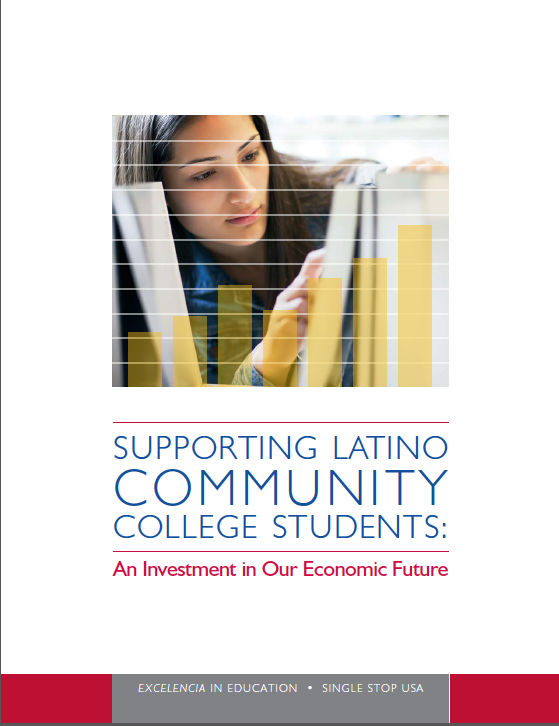LatinaLista — It is said that by 2025 63 percent of all jobs are going to need some ‘post-secondary’ education. In simple terms, a high school diploma is not going to cut it in the future for a job that pays a living wage and keeps a family from using food stamps or shopping from donation bins.
Many Latino students have gotten the message. A recent Pew report revealed that a record number of Latino high school students had enrolled in college in 2012 — surpassing the rate of white students by two percentage points.
Yet, disturbing studies by educational nonprofits show that instead of college being the start of achieving the new American Dream, for too many students it’s the beginning of the end.
Too many Latino students start college already not fitting the traditional profile of a college student — they need academic prep or remediation, they live off-campus with their parents or own families; and they attend part-time while working 30 hours or more a week. In turn, colleges are strapped to provide the necessary financial and academic resources to help the students. Frustration sets in and it isn’t long before dreams are shattered before they can begin.
A new report released today by Excelencia in Education underscores the fact that community colleges are the overwhelming choice (51%) of Latino students for their first introduction into higher education. The convenience of location and cost draw many Latino students to enroll but those factors alone don’t mean the students will finish.
According to the report, Supporting Latino Community College Students: An Investment in Our Economic Future, researchers found that “while 70 percent of Latinos who apply for college will apply for financial aid, the award amounts they receive are lower than other racial/ethnic groups.”
Since many Latino students enrolled in community colleges are low-income, they tend to put the needs of their families before education. It’s not unusual for these students to drop out or ‘postpone’ college until they get their finances in order. Exelencia in Education researchers examined how an innovative approach by the nonprofit, Single Stop, is changing how some community colleges are working with these students to overcome financial challenges. From the report, it’s easy to see that the key is that community colleges must embrace the term ‘community’ when it comes to helping low-income students.
Single Stop and its college partners develop relationships with local community-based organizations to provide a quick and coordinated approach to financial stability. Importantly, these partner organizations frequently come on campus to bring their additional services to the students where they are. Legal service organizations provide services related to issues like consumer debt and evictions that can exacerbate economic insecurity. Financial counselors help students develop a sustainable budget. Free tax preparation is available on campus through the IRS Volunteer Income Tax Assistance (VITA) program. This service helps to connect students and their families to the earned income tax credit (EITC), child tax credit (CTC) and American Opportunity Tax Credit (AOTC) which frequently exceed more than a $1,000 per student, especially among working students with children.
By providing students on-campus access to public benefits like food stamps or public health insurance, financial advice, legal services, and free tax preparation, Single Stop connects them with thousands of dollars worth of benefits and community services. Research indicates that targeted financial interventions of this size can keep students in school from semester-to semester.
In the end, the report’s authors advise policymakers and campus administrators to do such things as: coordinate student services, complement financial aid with additional support plus improve outreach for financial aid information. Also, the authors recommend that schools increase their flexibility in how they serve students, expand and align eligibility to those students in need and, one of the most important, develop relationships with effective community partners.
It just makes sense that taking care of the physical and emotional health of students will allow them to free their minds and concentrate on achieving their #1 goal — getting a job that pays well.



